by Martin Green
In talking with the project leader of the Jaguar XE SV Project 8 during the 2017 Monterey Car Week, I learned about the types of changes that the engineers had to make to the car – touted the most extreme-performance Jaguar ever – to give it this kind of intense technology.
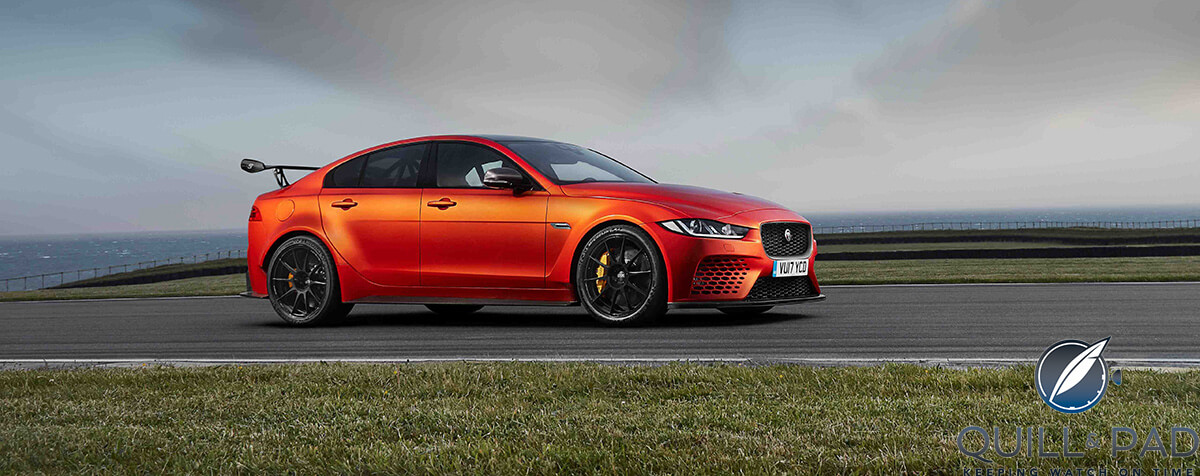
Jaguar XE SV Project 8
And something occurred to me: there was great similarity between this conversation and others I have so often had with watch manufactures regarding their latest models.
There is, however, also one distinction: the car industry has a vastly different approach to new cars and how to introduce them to the public.
In fact, the car industry uses a wide variety of tactics with a single goal: to ensure that when the car is ready for ordering, it will be well received by both press and consumers alike. This makes sense because creating a new car requires incredible investment in terms of money and resources.
Car manufacturers often present “concept” or “vision” cars. These models are never meant to go into production but are used to give the public a glimpse of the direction the car manufacturer proposes and gauge the reaction.
When the manufacturer has committed to a certain design language or model strategy, it is not easy to stop. Not only due to the sunk investment, but also because it will require changing the production process completely.
For example, when Mazda contemplated a new design language for its complete lineup, it first premiered on the Shinari Concept Vehicle in 2011. Based on favorable responses, Mazda then released the CX-5 in 2012 as the brand’s first production car by to feature the new Kodo Soul of Motion design.
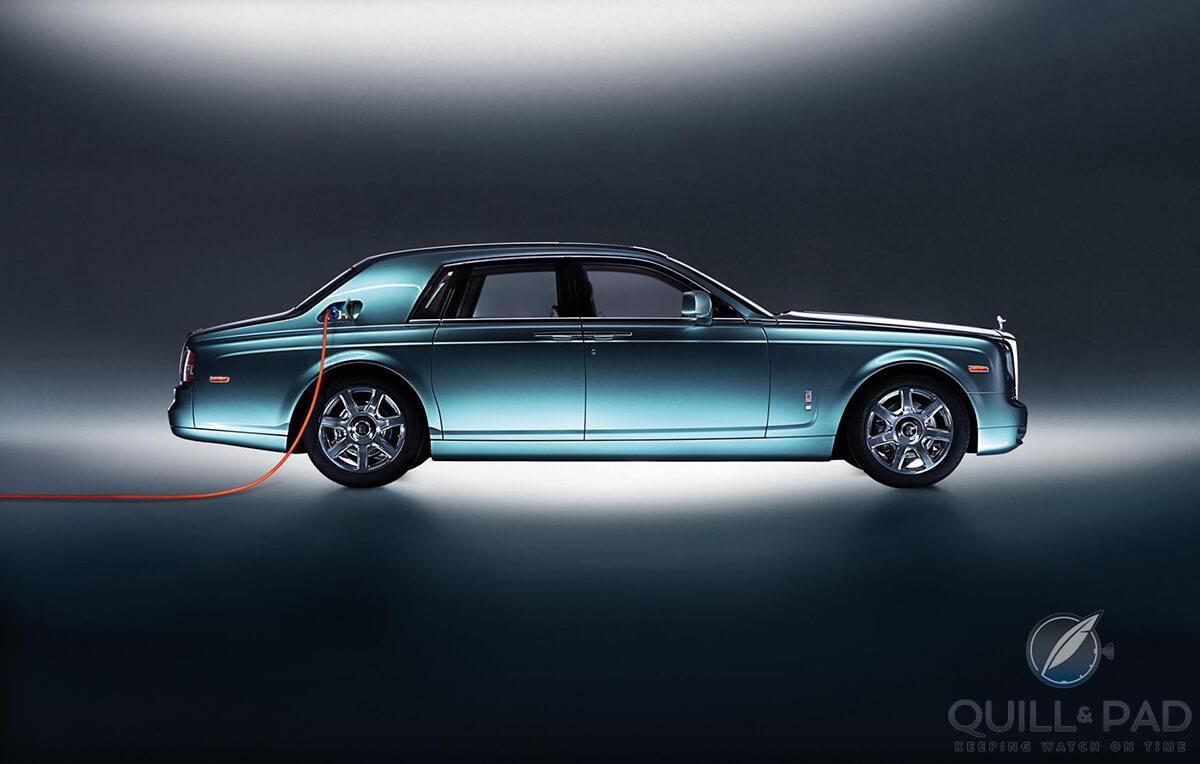
Rolls-Royce Phantom Experimental Electric 102EX
Concept vehicles can also be used to see how the public responds to new technology, especially when this is something one would not expect from the brand, like a a fully electric Rolls-Royce Phantom Experimental Electric 102EX.
Often, these cars have incredible wow factor, which usually contributes to favorable press and a headline or two.
Working with the public
Regarding prototypes and concept cars, the car manufacturer has often already committed to making this specific car, yet showing ideas to the public in advance can achieve several things, chief among them, based on the responses, the manufacturer can fine tune, especially in terms of design. This can make the end product more competitive as it is more aligned with what the consumer wants.

Bentley Bentayga
When the design or concept is different from what people are used to from the brand, it can help pave the way toward consumer acceptance. A great example of this is the Bentley Bentayaga, which was a massive departure from what we had come to expect from the Bentley, yet the prototypes paved the way for consumer acceptance well before the first model rolled off the production line.
To stay with Bentley, another good example is the new 2018 Continental GT, which looks a lot like 2015’s Bentley EXP 10 Speed 6 Concept, a car that was very favorably received by consumers and press alike.
Another advantage of introducing prototypes is that it simply makes your life easier as a manufacturer. Most likely the car will already get some press coverage, and consumers who may have been considering purchasing a different new car could hold off to wait for this introduction.
Prototypes can also bite the car manufacturer, though, as a consumer might hold off on a purchase of the brand’s current model when the prototype becomes publicized. Especially where higher end cars are concerned, there are people who even write checks on the spot for a down payment just to ensure they are first to get the latest model.
This has even happened with vision cars, where the manufacturer had no intention of producing the car at all but the vast amount of pre-orders made the company reconsider.
Car manufacturers play this game with a great degree of finesse. Road tests are an essential part of getting the car ready for production. Often these cars are heavily camouflaged or disguised as the previous model when tested out on public roads, but there are times manufacturers make sure that the car is “caught” by photographers, showing just enough or perhaps nothing at all.
This works wonderfully as a teaser, again generating free publicity.
Now to the watch industry: when was the last time you saw a prototype or a “vision watch” of a timepiece that had yet to be introduced?
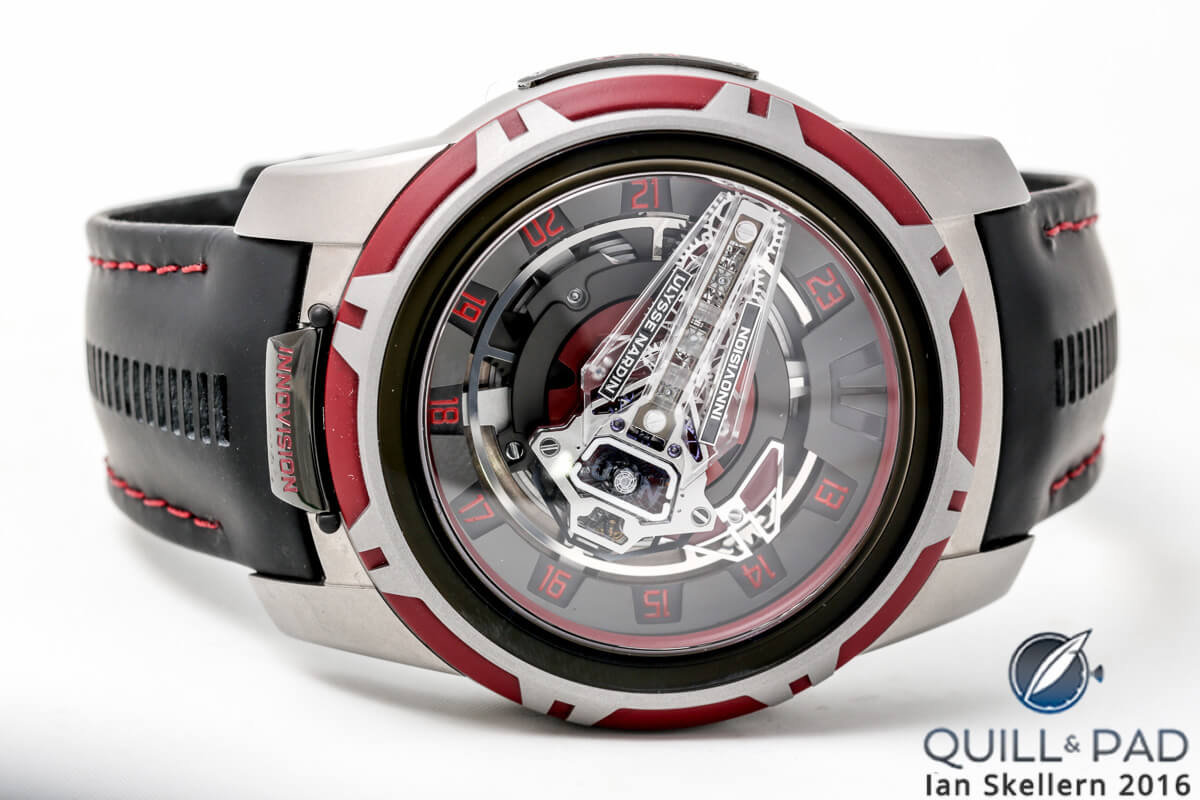
Ulysse Nardin InnoVision 2: a rare publicly introduced concept watch
Independent watchmakers sometimes allow glimpses of what they are working on, but photographs are more often than not allowed. With major brands, the entire process almost exclusively takes place behind closed doors. The public, and in most cases also the press, don’t learn about the new model until it is officially introduced – often during a grand event.
What are watch manufacturers afraid of?
When you ask watch manufacturers about this, they often say that consumers only want to see new watches that they can buy immediately.
I doubt that, and Ulysse Nardin’s Innovision 2 from SIHH 2017 is a perfect example (see Diving Deep Into The Technology Of The Ulysse Nardin InnoVision 2).
Check Kickstarter, where seed money for watches is pledged based on prototypes.
While this may at least in part be because Kickstarter brands chiefly cater to the more affordable end of the market, I feel higher end brands could also greatly benefit from this strategy. Czapek is a great example of a more luxurious brand finding success with crowd funding (see Calling On The Village: Czapek & Cie. And The Quai Des Bergues Collection).
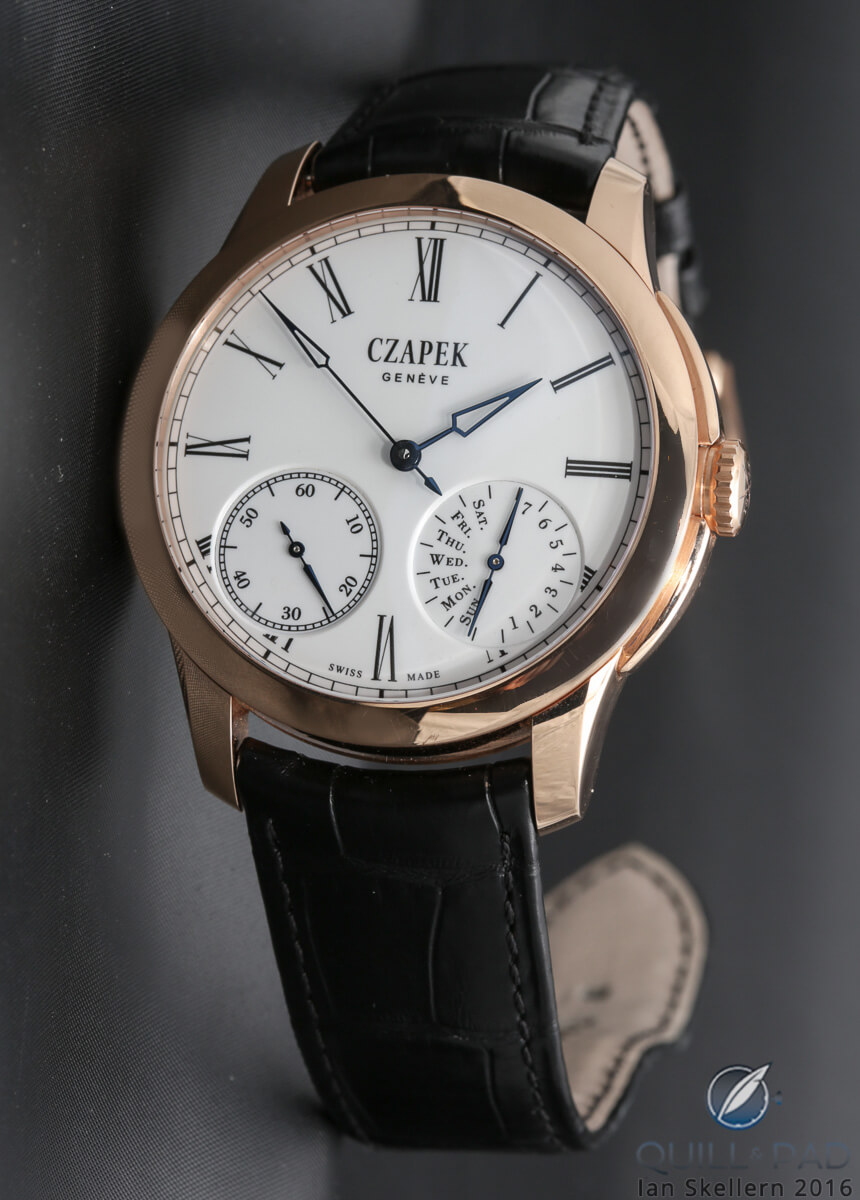
Czapek & Cie. in pink gold with high-fire enamel dial from the Quai des Bergues collection
Another argument often used by manufacturers is that such tactics could open the brand to criticism. When presented respectfully, I believe that it is especially criticism that serves best at this stage of development.
Of course, a brand might not be happy hearing it, as criticism is often connected to failure in our society. But it would indeed be better to hear critique about a prototype than a product the brand is fully committed to, wouldn’t it?
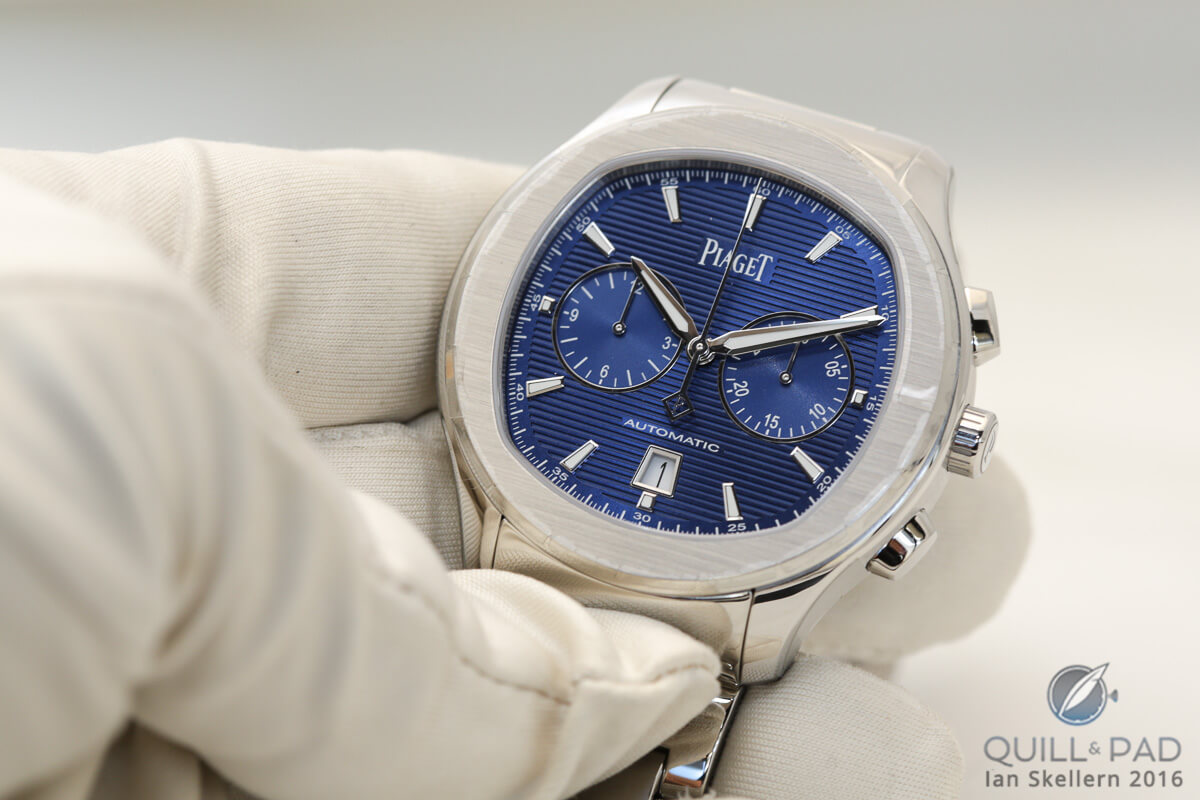
The Piaget Polo S chronograph with blue dial: a watch that was received with mixed feelings
Piaget might probably have wished that it could go back in time and further fine tune the Polo S after it was received with, shall we say, mixed feelings (see Piaget Polo S: Outside Its Comfort Zone).
The same can be said of 2015’s Cartier Ronde Croisière Cruise Collection, which now seems far less controversial than the Piaget Polo S as its fate was to be largely ignored by press and consumers alike.
Vision for the future
I was fortunate enough to visit Cartier’s Time Art exhibition in 2014, where an entire room was dedicated to Cartier’s ID One and ID Two, two visionary concept models by the famous maison presented in a display designed by Tokujin Yoshioka. This left a profound impact on me to this day as I can still remember them clearly, despite having seen and handled hundreds of different watches between then and now.

Cartier ID Two
I thought these concept watches were a stroke of brilliance, yet unfortunately they have proved to be a one-time occurrence whose technology was followed up by neither Cartier nor the rest of the industry.
Especially now that the market for watches has become far more challenging, I think that it can be very advantageous for watch brands to engage in vision and concept watches. It can help define and align future products with current markets as well as generate extra publicity.
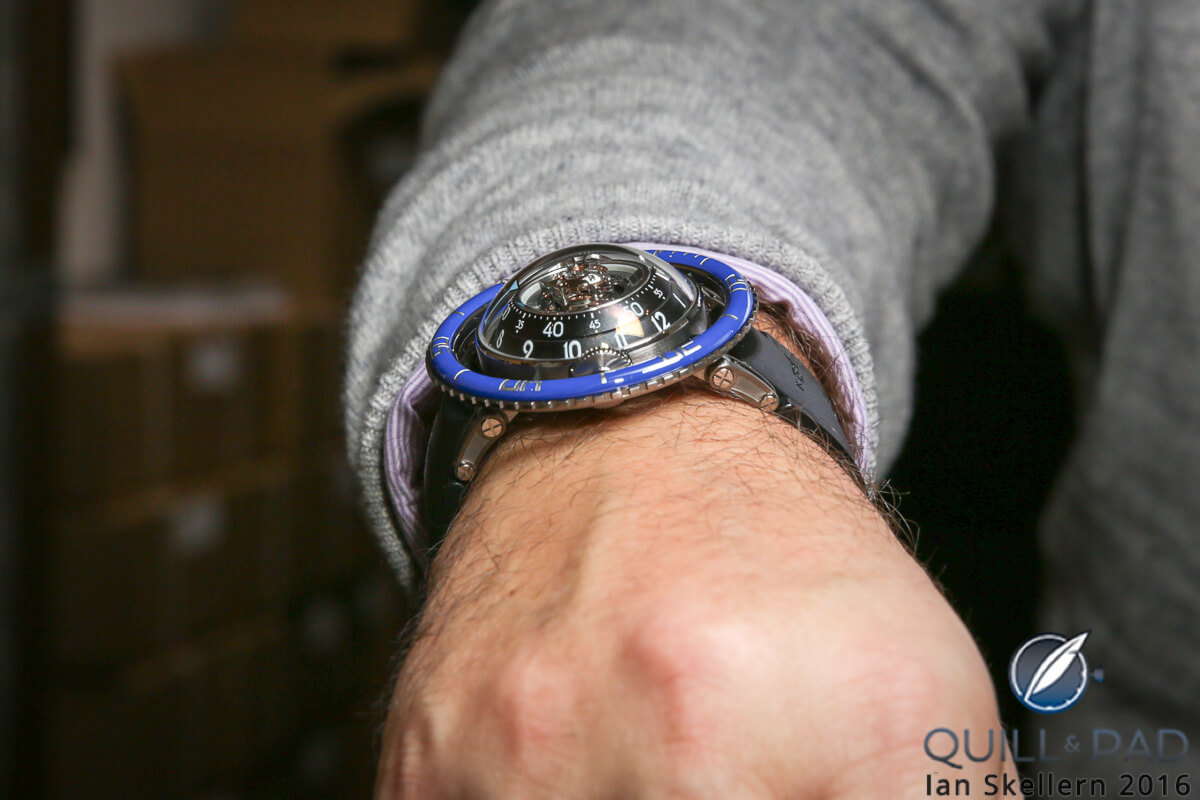
MB&F HM7 Aquapod on the wrist: production model or concept watch?
Even more, they can also play an important role in eliminating at least some of the risk involved with introducing new collections. They can also make the watch industry a more vibrant place, as visions and prototypes often appeal to the senses and boldly go where no product has gone before.
So who will go first?
Trackbacks & Pingbacks
-
[…] prototypes/concept watches part of the way they approach the market just as car brands do? (See What Watch Brands Can And Should Learn From The Automotive Industry for more on […]
Leave a Reply
Want to join the discussion?Feel free to contribute!

Great article, refreshing and supportive. We never really dared showing our vision watches, we only showed our prototypes a year before being capable to deliver them, and yes we improved them thanks to the feed backs. After reading this editorial, I think we have to reach the point of showing a vision watch! Get ready for 2019… (or maybe even 2018 ;-))
All the best
Xavier